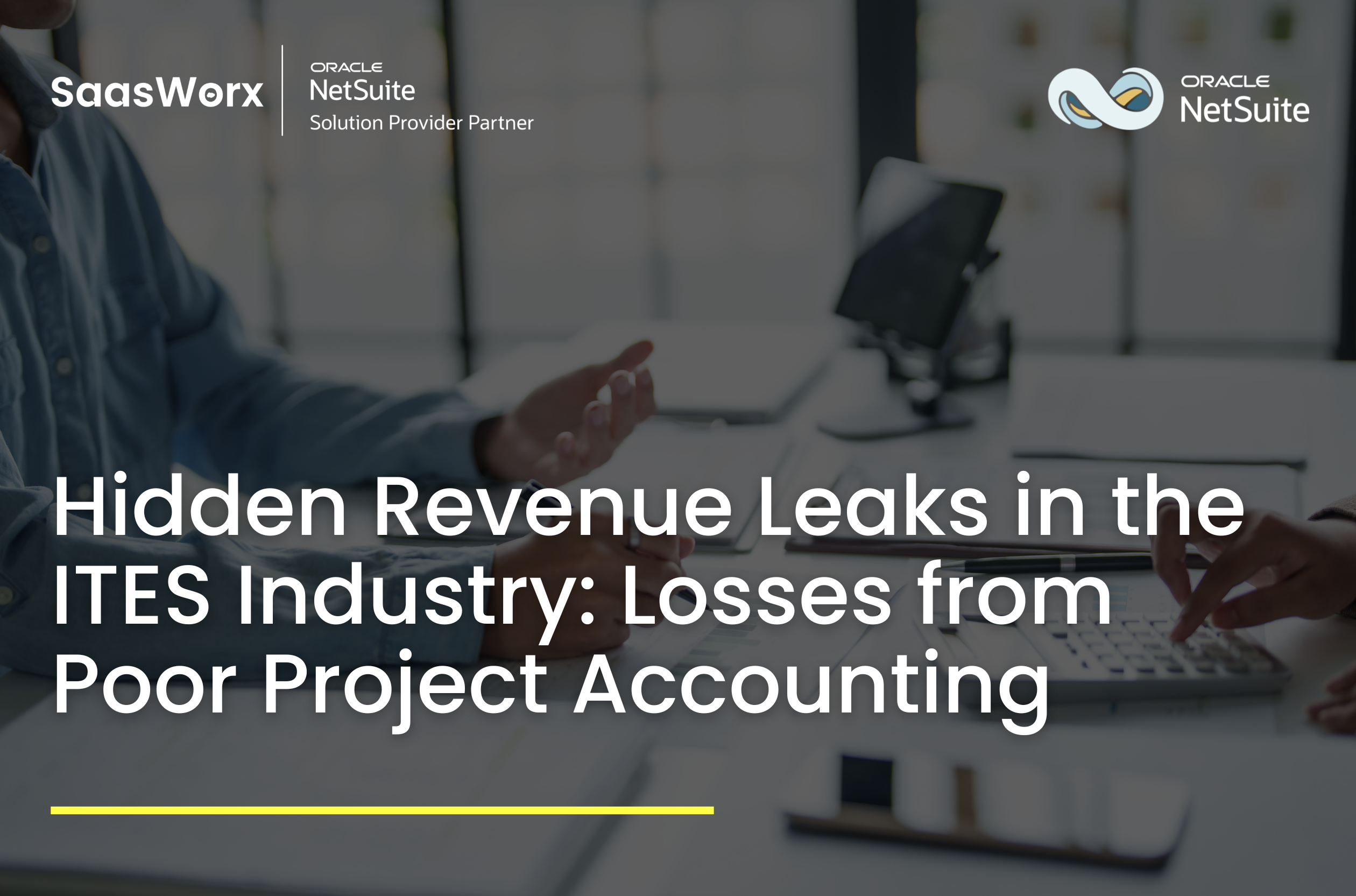

Effective project accounting is critical for keeping IT services firms profitable and compliant. Project accounting tracks all costs and revenues for each project – from labor and materials to overhead – so managers know when projects are on budget. When done well, this “provides information that can help in monitoring and controlling the progress and performance” of a project. But when project accounting is weak or manual, hidden leaks can quietly drain revenue.
Even small gaps add up. Industry research finds that professional services firms worldwide lose an enormous amount of billable time each year – roughly $553 billion of potential revenue is leaked from lost or unrecorded hours. In other words, nearly one in five billable hours may slip through the cracks. For example, surveys show manual time tracking often fails to capture 20–40% of billable work. A single project team can lose thousands of dollars a year when staff forget to log time or use multiple spreadsheets. Moreover, firms that fail to catch these issues early see ripple effects on cash flow and forecasting.
Hidden leaks usually stem from process gaps or manual workarounds. Some of the most frequent causes are:
Taken together, these gaps quietly drain profits. Each category alone may seem manageable, but combined they become “silent killers of profitability”.
The effects of project accounting leaks reach far beyond a single project. Every unbilled hour or extra expense directly cuts into profit. For example, one industry analysis shows that just 4.3% revenue leakage (from disputes, scope changes, etc.) would cost a $10M firm about $430,000 annually. Scale that to larger firms, and the sums are staggering.
Beyond hard numbers, leaks create wider headaches: strained cash flow, missed growth opportunities, and damaged client trust. If projects overrun, teams tied up on late work can’t start new revenue-generating projects, so the opportunity cost is high. Late or incorrect invoices also frustrate clients and can lead to disputes or churn. In short, lost revenue reduces margins and limits a company’s ability to invest in growth or pay down debt.
For CFOs and finance heads, the warning signs are familiar: unpredictable profits, budget shortfalls, and audits that uncover unbilled work. One analysis bluntly states that “you are leaking revenue without even realizing it” if project accounting is sloppy. By year-end, these incremental losses can show up as a disappointing bottom line or red flags from investors.
Consider a hypothetical mid-sized IT services firm. The team uses Excel to track time and plain invoices to bill clients. Over a quarter, they complete several large projects. However, without real-time tracking or alerts, 10–15% of billable hours (for support calls, change requests, extra meetings) are never invoiced. By the end of the year, management notices a profit margin 5 points lower than forecast. An internal review finds that dozens of timesheet entries were missed and several change orders went unrecorded, resulting in an unexpected $300,000 revenue shortfall.
While this case is illustrative, studies confirm it isn’t rare. In professional services, delayed invoices and scope creep frequently leave money on the table. Even reputable firms admit to discovering millions in unbilled work only after they implement better systems. The consensus is clear: simple process fixes could have prevented these leaks.
Stopping hidden leaks starts with process discipline and the right tools. Firms that adopt integrated project accounting solutions regain control quickly. Modern ERP/PSA systems – such as Oracle NetSuite’s project accounting module – tie every project activity (timesheet, expense, purchase order) to the general ledger, giving a complete financial view in real time.
For example, with NetSuite each billable hour automatically flows into the project’s budget. The system can flag missed invoices or overspent budgets immediately. One CFO noted: “With NetSuite, we are able to see any potential issues ahead of time, which allows us to become very proactive rather than reactive.”.
Key best practices include:
Adopting these solutions often requires new software and process changes. That’s where SaasWorx helps. We specialize in implementing Oracle NetSuite, MuleSoft, and Salesforce for professional services in India. We help firms move from spreadsheets to a connected, AI-enabled ERP, where transactions are automatically recorded and reconciled—cutting down errors. Clients report quicker invoicing and 20–30% fewer budget overruns after automation.
One NetSuite client now auto-links project time tracking to invoicing. As soon as a consultant logs hours, the system generates a billing item. This ensures missed time, late invoices, or budget oversights are caught early. Contract-based billing also reduces disputes.
Importantly, systems like NetSuite support India’s GST and e-invoicing rules natively. This ensures tax and compliance are handled correctly, plugging another source of leakage.
Revenue leaks from weak project accounting quietly drain profits. Missed time entries, scope creep, and delayed billing all chip away at financial health. The upside? Most of these leaks are fixable with the right controls and tools.
By automating time and billing, enforcing change orders, and giving finance teams real-time visibility, firms can recover significant revenue. For CFOs and project leaders, the takeaway is clear: fix your project accounting now. With a solution like Oracle NetSuite and support from SaasWorx, losses become visible and avoidable. That protects today’s margins and builds long-term stability.